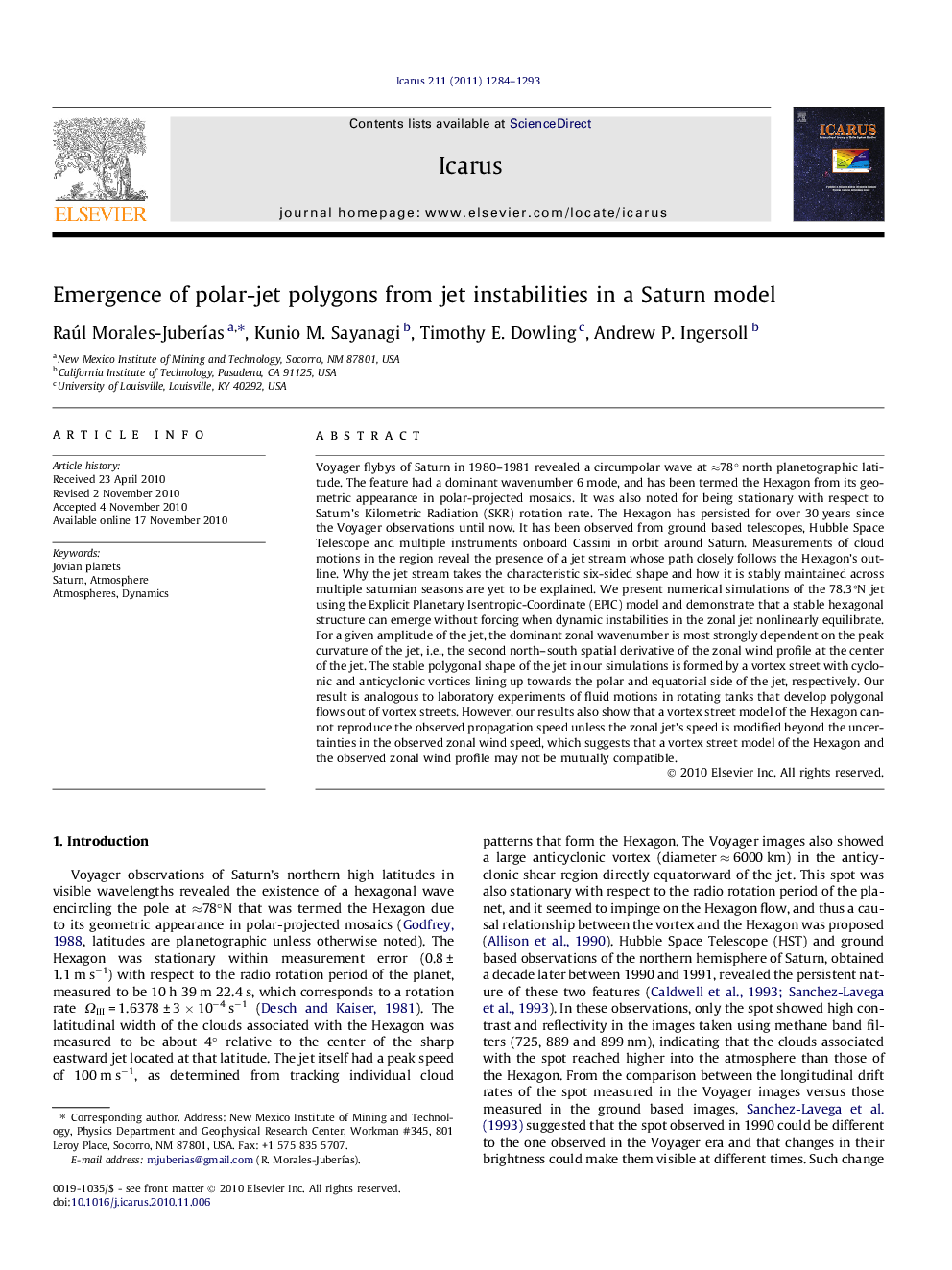| Article ID | Journal | Published Year | Pages | File Type |
|---|---|---|---|---|
| 1773956 | Icarus | 2011 | 10 Pages |
Voyager flybys of Saturn in 1980–1981 revealed a circumpolar wave at ≈78° north planetographic latitude. The feature had a dominant wavenumber 6 mode, and has been termed the Hexagon from its geometric appearance in polar-projected mosaics. It was also noted for being stationary with respect to Saturn’s Kilometric Radiation (SKR) rotation rate. The Hexagon has persisted for over 30 years since the Voyager observations until now. It has been observed from ground based telescopes, Hubble Space Telescope and multiple instruments onboard Cassini in orbit around Saturn. Measurements of cloud motions in the region reveal the presence of a jet stream whose path closely follows the Hexagon’s outline. Why the jet stream takes the characteristic six-sided shape and how it is stably maintained across multiple saturnian seasons are yet to be explained. We present numerical simulations of the 78.3°N jet using the Explicit Planetary Isentropic-Coordinate (EPIC) model and demonstrate that a stable hexagonal structure can emerge without forcing when dynamic instabilities in the zonal jet nonlinearly equilibrate. For a given amplitude of the jet, the dominant zonal wavenumber is most strongly dependent on the peak curvature of the jet, i.e., the second north–south spatial derivative of the zonal wind profile at the center of the jet. The stable polygonal shape of the jet in our simulations is formed by a vortex street with cyclonic and anticyclonic vortices lining up towards the polar and equatorial side of the jet, respectively. Our result is analogous to laboratory experiments of fluid motions in rotating tanks that develop polygonal flows out of vortex streets. However, our results also show that a vortex street model of the Hexagon cannot reproduce the observed propagation speed unless the zonal jet’s speed is modified beyond the uncertainties in the observed zonal wind speed, which suggests that a vortex street model of the Hexagon and the observed zonal wind profile may not be mutually compatible.
Research highlights► Stable hexagonal structure can emerge without forcing when dynamic instabilities in the zonal jet nonlinearly equilibrate. ► For a given amplitude of the jet, the dominant zonal wavenumber is most strongly dependent on the peak curvature of the jet. ► The stable polygonal shape of the jet in our simulations is formed by a vortex street with cyclonic and anticyclonic vortices lining up towards the polar and equatorial side of the jet.
